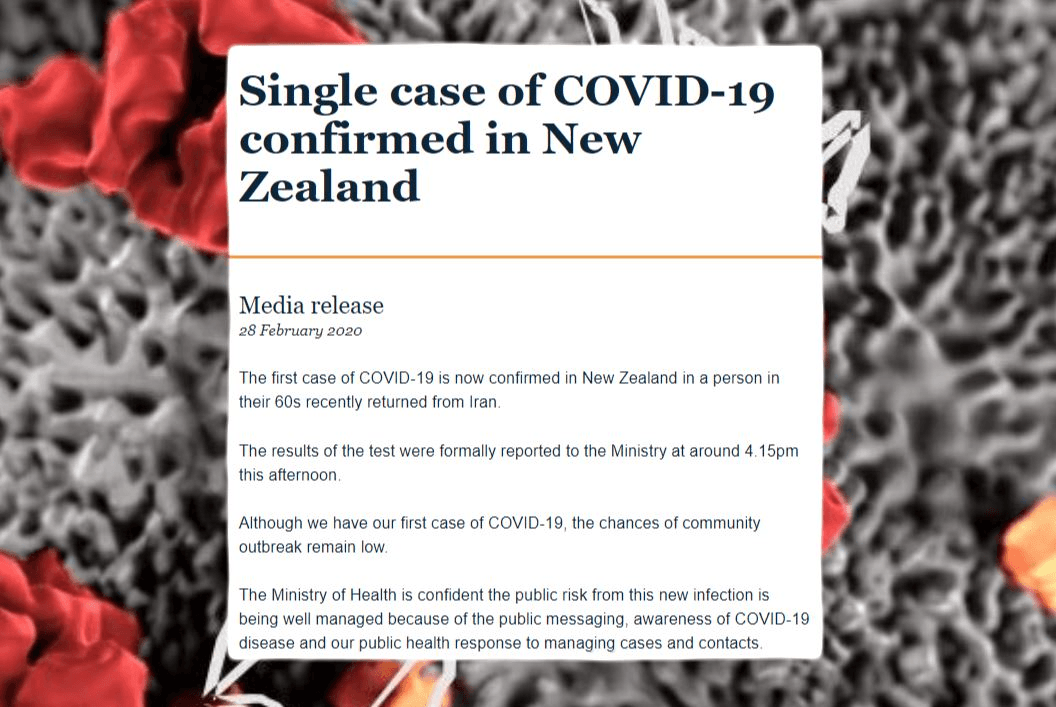A year ago, on February 28 2020, the first positive test for Covid-19 was recorded. As part of the country goes into a lockdown for the fourth time, you’d be forgiven for blurry recollections. This timeline, compiled by RNZ, lays it out day by day.
While a historic case was later classified as New Zealand’s first Covid case – as they had reported having symptoms on arrival on 21 February – the first case of Covid-19 in New Zealand was reported on 28 February 2020. One year later and the country is still dealing with its effects, with Auckland going into a level three lockdown today.
The coronavirus first appeared in China in late 2019, just a few short months before it made its way to New Zealand. The new type of coronavirus is identified and isolated by Chinese authorities on 7 January, as the virus quickly spread into Thailand, Japan, South Korea, Taiwan, Hong Kong, Macau, and the United States.
By late January, the global number of cases rose to nearly 2800 and the death toll reached 80. In early February, New Zealand brought in entry restrictions on foreign nationals travelling here from, or transiting through, mainland China. But as cases in Wuhan started to decline, the virus started to explode worldwide, hitting Iran, South Korea and Italy hard, and New Zealand was not immune.
Feburary 2020
28 February: New Zealand reports its first case of Covid-19, in a person in their 60s who has travelled to Auckland from Iran. The government places restrictions on people arriving from Iran.
29 February: Health staff begin meeting direct flights landing at New Zealand airports from Hong Kong, Japan, South Korea, Singapore and Thailand. Some supermarkets are swamped by people buying toilet paper, hand sanitiser and tinned food.
March 2020
1 March: The NZ government announces anyone who has visited northern Italy and South Korea must self-isolate for 14 days.
4 March: An Auckland woman in her 30s who has visited northern Italy is confirmed as being the second case of Covid-19 in New Zealand. The global death toll tops 3000.
5 March: A third case is confirmed in Auckland in a man in his 40s whose family recently travelled from Iran. This is the first known person-to-person transmission in New Zealand.
6 March: A fourth case of the virus is confirmed in an Auckland man in his 30s. He is the partner of the second case, announced on 4 March.
7 March: A fifth case is confirmed – an Auckland woman in her 40s, who is the partner of the third case. The global number of reported cases rises to 101,927.
8 March: More than 100 countries have reported cases of Covid-19. Italy is put into lockdown.
11 March: The WHO declares an official pandemic.
13 March: Auckland’s Pasifika Festival is cancelled due to concerns about the virus spreading. The Black Caps play Australia in an empty Sydney stadium and the rest of the tour is later called off.
14 March: As New Zealand’s sixth case is confirmed, the government announces anyone entering the country must self-isolate for 14 days, except those arriving from the Pacific. Cruise ships are banned from the country. Strict border measures for people travelling from New Zealand to the Pacific are put in place.
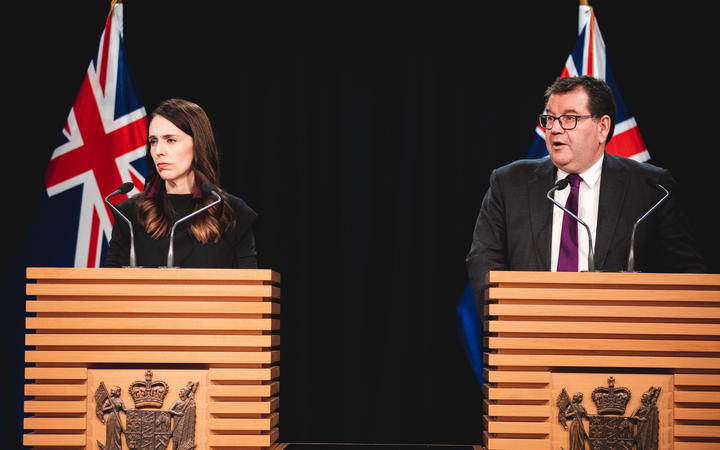
15 March: Two more people test positive for the virus in New Zealand. Finance Minister Grant Robertson says the government is expecting a serious blow to the economy from the effects of the virus and the travel ban. France and Spain go into lockdown.
16 March: Prime Minister Jacinda Ardern says any tourists who enter New Zealand and do not self-quarantine will be deported. Air New Zealand halts share trading and slashes services, and the Reserve Bank announces an emergency official cash rate cut. The total number of cases and deaths outside China has overtaken the total number of cases in China. Germany Canada, Poland, the Czech Republic and Denmark have closed some of their borders.
17 March: Three new cases are confirmed in New Zealand Financial markets around the globe continue to freefall. The government announces a $12.1 billion package, worth 4% of the country’s GDP. The package includes a $500m boost for health, $8.7b in support for businesses and jobs and $2.8b for income support and boosting consumer spending. A Dunedin school will close for the next two days, after a pupil is confirmed to be the country’s 12th case of Covid-19.
18 March: Eight new cases are announced – in Auckland, Christchurch, Waikato and Invercargill. All cases are in people who have returned to New Zealand from overseas. Globally, there are 191,127 cases of the virus and 7807 people have died.
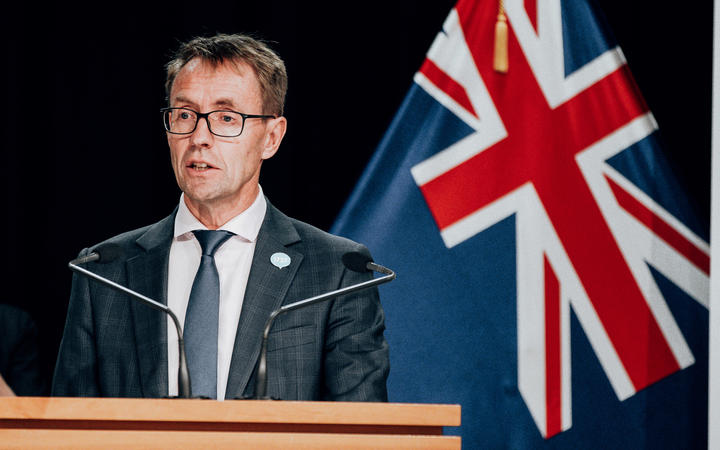
19 March: Eight further cases are announced, bringing the total number in New Zealand to 28. The new cases are in Southland, Taranaki, Rotorua, Northland, and Auckland. Director-General of Health Dr Ashley Bloomfield says all cases are linked to overseas travel, meaning the coronavirus has not yet been transmitted in the community. All indoor gatherings of more than 100 people are to be cancelled. For the first time in history, the government closes the country’s borders to all but New Zealand citizens and permanent residents.
20 March: 11 more cases are confirmed. Auckland Council closes pools, libraries, galleries and other community facilities for 14 days, and Air New Zealand’s shares plummet as it resumes trading after a four-day halt. The number of confirmed cases worldwide exceeds 200,000. It took more than three months to reach the first 100,000 cases, and only 12 days to reach the next 100,000.
21 March: 13 new cases are confirmed in New Zealand and community transmission cannot be ruled out. This brings the total number of cases in New Zealand to 52. Ardern asks people aged 70 and older and people with compromised immune systems to stay at home as much as possible. She asks people who can work from home to do so, and says people should limit travel within the country. The government introduces a four-level alert system to help combat Covid-19. Ardern says the country is currently at level two, which means the risk of community transmission is growing.
22 March: 14 new cases are confirmed and community transmission is yet to be ruled out. The total number of cases in New Zealand is now 66. A 68-year-old woman dies in Guam – the first Covid-19 related death in the Pacific. Other Pacific islands with cases of the virus are Fiji (2), Papua New Guinea (1), French Polynesia (11), New Caledonia (4) and Hawaii (48). Nauru, Tonga, Samoa and Tuvalu have all declared a state of emergency.
23 March: 36 new cases bring the total to 102. The two cases confirmed on 21 March – one in Wairarapa and one in Auckland – are being treated as community transmission. The Prime Minister announces the country has moved to alert level three, effective immediately. This means there is a heightened risk that the disease is not contained and is spreading in the community. People are instructed to stay at home. Schools and other educational facilities will be closed from 24 March. All non-essential businesses will close (this excludes essential businesses like supermarkets, pharmacies and medical clinics). Travel will be severely limited and healthcare services will be re-prioritised. In 48 hours, the country will move to alert level four.
24 March: 43 new cases bring the total number of cases to 155 . Four of the cases involve community transmission in Auckland and the Wairarapa.
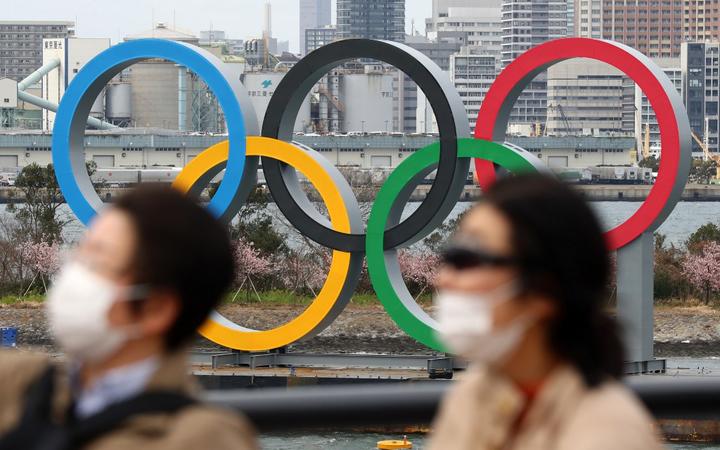
25 March: The Olympic Games are postponed to 2021. Globally, there are 372,757 confirmed cases and 16,231 people have died. In New Zealand, a state of emergency is declared, as the country prepares to go into lock-down at midnight, for a minimum of four weeks. Fifty new cases of the virus are announced. New Zealand moves to alert level four at 11.59pm, and the entire nation goes into isolation.
26 March: Normally bustling streets are empty as New Zealand enters day one of lockdown. Seventy-eight new cases are announced, bringing the total to 283. Italy now has 69,176 cases of the virus, Spain has 39,673, Germany has 31,554, and France has 22,025.
27 March: 85 new cases bring the New Zealand total to 368.
28 March: 83 new cases in New Zealand. The global number of cases is 509,164.
29 March: New Zealand reports its first Covid-19 related death, in a woman in her 70s from the West Coast. Sixty-three new cases of the virus are reported, bringing the total to 514.
30 March: 76 new cases. Bloomfield says about 2% of cases – in approximately 10 people – appear to be the result of community transmission.
31 March: 58 new cases bring the total to 647.
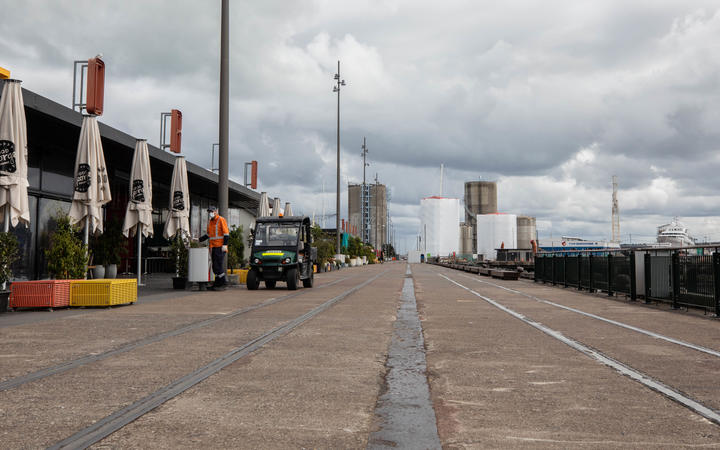
April 2020
1 April: There are 61 new cases and 14 people are hospitalised with the virus.
2 April: New Zealand has its biggest increase in one day – 89 new cases. The total number is 797.
3 April: 71 new cases. Finance Minister Grant Robertson announces legislation to make changes to the Companies Act. He says it will help struggling businesses by letting them place existing debts into hibernation until they can start trading normally again. The change allows company directors facing liquidity problems a ‘safe harbour’ from insolvency duties.
4 April: There are 82 new cases, bringing the total to 950. This is day 10 of lockdown.
5 April: 89 new cases bring the total to 1039. There are now 12 clusters of Covid-19 in the country. A cluster is 10 or more infections from the same place.
6 April: 67 new cases. Globally, the number of cases has climbed above 1 million and more than 50,000 people have died. UK Prime Minister Boris Johnson is hospitalised after testing positive for the virus.
7 April: 54 new cases bring the total to 1160. In the past day, 65 people have recovered. This is the first time recoveries have exceeded new cases. Ardern says the rates suggest the lockdown is working. Health Minister David Clark is demoted after admitting to having taken his family to the beach, in breach of lockdown rules.
8 April: Two weeks into lockdown, 50 new cases are announced. Two people are in a critical condition in hospital. The rate of community transmission remains at about 2%.
9 April: 29 new cases are reported, the lowest number since 23 March, before the lockdown began. “In the face of the greatest threat to human health that we have faced in over a century, Kiwis have quietly and collectively implemented a nationwide wall of defence,” the Prime Minister says. “You are breaking the chain of transmission and you did it for each other.”
10 April: 44 new cases. A second death is reported, of a Christchurch woman in her 90s.
11 April: 29 new cases and two deaths are announced. One is a Wellington man in his 80s and another is a man in his 70s who was at Burwood Hospital in Christchurch. The Christchurch man was from the same rest home as the woman who died on 10 April.
12 April: 18 new cases. The total is 1330 on the 18th day of lockdown.
13 April: A fifth Covid-19 related death is announced – in a man is his 80s, who was at Burwood Hospital after being transferred from Rosewood Resthome in Christchurch. The number of new cases is 19.
14 April: Four more Covid-19 related deaths are announced, bringing the country’s death toll to nine. All four deaths are of men, and three are linked to the cluster at Rosewood Rest Home. Seventeen new cases of the virus are confirmed.
15 April: Twenty new cases bring the total to 1386.
16 April: Fifteen new cases.
17 April: Two deaths and eight new cases are announced. Both deaths are linked to clusters: A man in his 90s, who died at Waikato Hospital, was connected to a Matamata cluster, and a woman in her 80s was at Burwood Hospital. The New Zealand death toll is now 11. Globally, the number of coronavirus cases has surpassed 2m. In the US, more than 30,000 people have died. A clinical trial into the efficacy of 16 drugs on patients with Covid-19 is being led by New Zealand researchers.
18 April: There are 13 new cases, bringing the total to 1422. The WHO releases data on Covid-19 cases by age and sex. The sex ratio (male to female) among confirmed cases is 1.03:1. The median age is 51.
19 April: Nine new cases. A death in Invercargill last week is confirmed to be Covid-19 related, bringing the death toll to 12.
20 April: Nine new cases. The prime minister announces the country will remain in level four lockdown for an additional five days, to 27 April. New Zealand will remain at level three for two weeks, before the alert status is reviewed.
21 April: The death of an Auckland woman in her 70s is reported. The woman was at a rest home in Te Atatu, Auckland. Five new cases are identified.
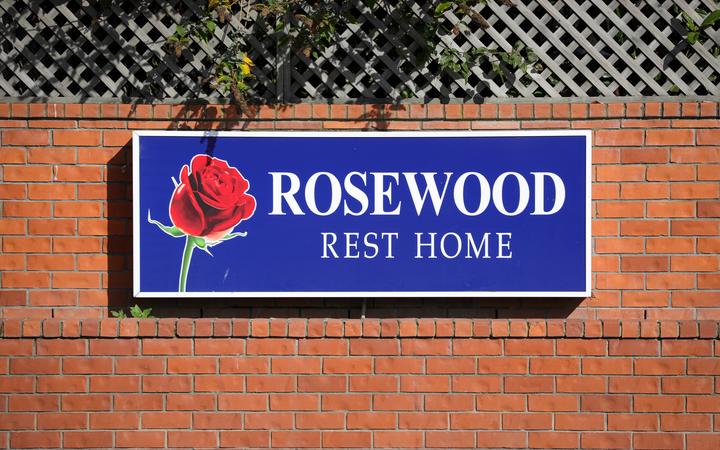
22 April: Six new cases and an additional death are reported. The latest death is a woman in her 80s, who was a resident of the Rosewood Rest Home.
23 April: On day 29 of lockdown, three new cases and two deaths are reported. One death was a woman in her 60s who was in intensive care in Dunedin Hospital. The other was a man in his 70s who was at Rosewood Rest Home.
24 April: Five new cases. The total is now 1456, with 1095 people recovered. The death toll is 17. We learn the tenth death was of a man in his 60s from Rosewood Rest Home. Worldwide cases have surpassed 2.6m, with more than 186,000 deaths.
25 April: Five new cases. Another death is reported – a woman in her 70s in Waitakere hospital, Auckland, where she had been transferred from St Margaret’s Hospital and Rest Home. This is the second death linked to the Te Atatu rest home.
26 April: Nine new cases. Four are linked to existing clusters, and five are linked to known confirmed cases.
27 April: Another resident of St Margaret’s Hospital and Rest Home – a woman in her 90s – has died. This brings the country’s death toll to 19. The global death toll has surpassed 200,000. Five new cases are reported in New Zealand and the country prepares to move into alert level three at 11.59pm.
28 April: Across the country, queues form outside fast food drive-throughs in the early hours, as New Zealand moves into alert level three. The change means fast food outlets can operate with strict physical distancing. The country will remain at this level for at least two weeks. At the daily 1pm media conference, three new cases are announced.
29 April: Two new cases bring the total number of confirmed and probable cases to 1474. Yesterday, about 4% of children returned to early childhood education facilities and about 1% returned to schools.
30 April: Three new cases.
May 2020
1 May: Three new cases.
2 May: Six new cases and the death of a man, who was part of the Rosewood Rest Home cluster.
3 May: Two new cases, bringing the New Zealand total to 1487. Globally, 3,502,126 cases have been confirmed and 247,107 deaths have been attributed to the virus.
4 May: For the first time since 16 March, no new cases are reported in New Zealand.
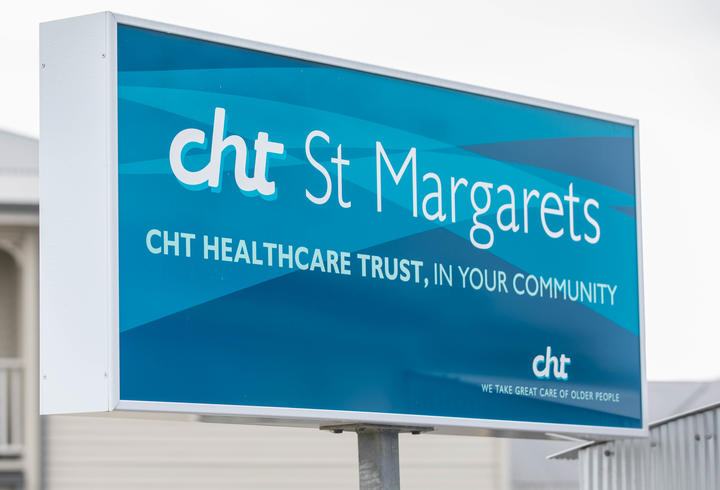
6 May: Two new cases – one is part of a Maris College cluster and the other is linked to the St Margaret’s cluster, both in Auckland.
7 May: One new case, in a person linked to a cluster in Matamata.
8 May: The total number of Covid-19 cases rises to 1490, as one new case is reported, and a probable case is confirmed.
9 May: Two new cases, both linked to the St Margaret’s cluster.
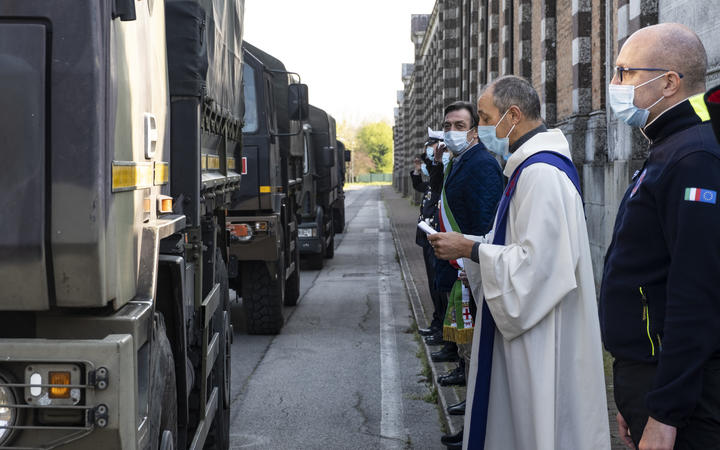
10 May: Two more cases. One is linked to St Margaret’s and the other to overseas travel. Globally, the number of cases has surpassed 4 million, with 1.3 million in the United States, 224,000 in Spain, 220,000 in the United Kingdom, 219,000 in Italy and 210,000 in Russia. The global death toll is 282,000, with the greatest number of deaths (79,000) occurring in the US. New Zealand’s death toll is 21.
11 May: Three new cases – two linked to St Margaret’s and the third to overseas travel.
13 May: There are no new cases for a second day in a row.
14 May: New Zealand enters its first day at level two, and for a third day in a row, no new cases are announced. Globally, the death toll approaches 300,000. The government unveils a $50 billion recovery package as part of Budget 2020.
Between 15 May and 27 May: Three new cases, linked to the Marist, Rosewood and St Margaret’s clusters.
28 May: New Zealand’s death toll rises to 22, after the death of a 96-year-old St Margaret’s Hospital and Rest Home resident.
June 2020
3 June: No new cases are reported in New Zealand for the 12th day in a row. One case remains active. Globally, the number of confirmed cases is 6,378,239 and 380,250 deaths have been associated with Covid-19.
8 June: The Ministry of Health reports there are no more active cases in the country. At 11.59pm, the country moves to alert level one. Restrictions on work, school, sports, domestic travel and gathering size are lifted. Border controls continue – people entering the country will be tested and mandatory 14 day managed quarantine or isolation measures remain in place.
16 June: After 24 consecutive days without a new case in New Zealand, two new cases are found. In the following days, it emerges the new cases are sisters who were released from isolation to travel from Auckland to Wellington to visit a dying parent. The Prime Minister describes the incident as “an unacceptable failure of the system”.
18 June: One new case in managed isolation. Over the next few days, several more people test positive, all are recent arrivals in isolation.
29 June: As the number of flights into New Zealand increases, so does the number of new cases caught at the border. The number of active cases is 22. All are in managed isolation. Globally, the number of cases has topped 10m, with more than 500,000 deaths. One million new cases were recorded worldwide in the past six days.
July 2020
6 July: A cluster of new cases in Melbourne sees parts of the city put back into lockdown.
12 July: There are 25 active cases in NZ, all in managed isolation. The total in New Zealand is 1544. Globally, the pandemic continues to rage, with 12.9 million confirmed cases and more than 567,100 deaths. The number of cases in the United States is 3.3 million, with more than 135,000 dead. In Brazil, 1.8 million cases are confirmed – including in president Jair Bolsonaro. India and Russia are the third and fourth worst affected countries, followed by Peru, Chile, Mexico and the United Kingdom which has had nearly 300,000 cases and nearly 45,000 deaths.
23 July: There are 22 active cases in New Zealand. Globally, in the past 24 hours, the World Health Organisation reports 247,225 new cases and 7097 new deaths.
August 2020
11 August: After 102 days without community transmission, four members of a family in South Auckland test positive for Covid-19. The source of the infections is unknown.
12 August: The greater Auckland region moves back into lockdown alert level three at noon. The rest of the country moves into alert level two.
13 August: There are 15 testing centres open for Aucklanders to get swabbed for Covid-19 and long queues form outside many of them. There are 13 new cases -12 linked to the Auckland family, which has been identified as a cluster. This brings the total number of cases linked to the cluster to 17. One other case is in managed isolation.
14 August: 13 new cases, with two new cases in the South Waikato town of Tokoroa.
17 August: Nine new cases. Ardern announces the General Election will be moved to 17 October, due to the virus.
18 August: There are 13 new cases in the community. One case of community transmission is linked to a managed isolation hotel in Auckland.
19 August: Six new cases, five in the community, linked to the Auckland cluster, and one an imported case. Five people are in hospital in Auckland. Globally, the number of cases has surpassed 22 million, as the death toll approaches 800,000.
24 August: Nine new cases. One case is in a person who arrived in New Zealand from overseas, and eight others are linked to the Auckland cluster.
25 August: Seven new cases, six linked to the Auckland cluster and one under investigation. Three people are in a critical condition in hospital.
Between 28 and 31 August: 36 new cases are reported, of which 23 are community spread. Nine cases among members of Mt Roskill Evangelical Church are classified as a ‘sub-cluster’ (linked to the main Auckland cluster). In the week ending 30 August, more than 1.8 million new cases and 38,000 deaths were reported to the WHO.
September 2020
September 1: Five new community infections linked to the Auckland cluster, and nine new imported cases. Globally 25 million cases have been reported, with nearly 850,000 deaths. According to the WHO, the Americas account for approximately 13% of the world’s population, but more than 50% of officially reported global cases and deaths.
September 4: As small numbers of new cases linked to the Auckland cluster continue to be reported daily, the Prime Minister announces Auckland will remain at alert level “2.5” until at least 16 September. The death of a father of four, Alan Te Hiko, who was in his 50s, is reported as New Zealand’s 23rd Covid-19 fatality.
Between 4 and 6 September: Nine new community cases are reported, eight of which are linked to the Mt Roskill church ‘sub-cluster’. Four imported cases are reported. With 4.2 million cases of Covid-19, India overtakes Brazil as the country with the second highest number of cases after the United States, which has reported 6.3m infections to the WHO.
8 September: Six new cases are reported in New Zealand – two are imported cases and four are linked to the Mt Roskill Evangelical church. Six new cases, all linked to the church, are announced the next day.
10 September: Four new cases, two linked to the Mt Roskill Evangelical Fellowship. There are now 45 cases linked to the church, which has a congregation of 332 people.
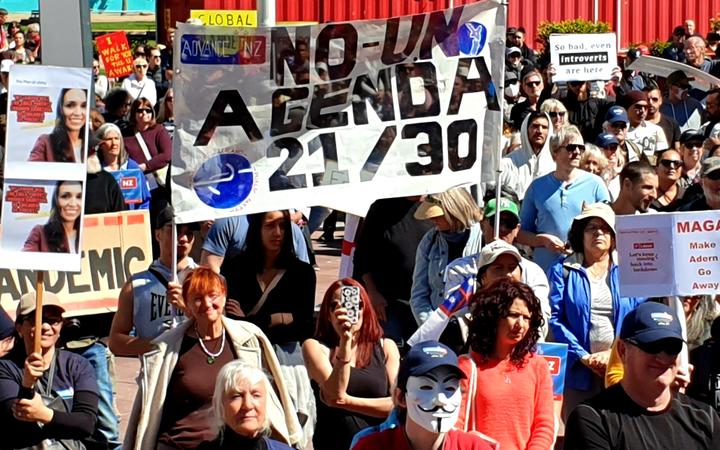
12 September: Despite the country remaining at alert level two with a maximum gathering size of 10 people in Auckland, a large anti-lockdown protest takes place in Auckland’s Aotea Square.
15 September: Revered Raukawa leader and historian Nigel Huirama Te Hiko dies of the virus in Waikato Hospital. His death from Covid comes less than a fortnight after that of his brother, Alan. The Tokoroa family of the brothers ask New Zealanders to be vigilant and cautious, saying Covid-19 is “so real”. The number of active cases is 77. The number of global cases approaches 30 million.
20 September: The number of active infections in New Zealand is 71. These include new cases linked to a man who tested positive after being released from a two week mandatory quarantine period. The man returned to New Zealand from India on 27 August and was released from an isolation hotel on 11 September, after returning two negative tests. He tested positive after developing symptoms on September 16.
21 September: The government announces that restrictions on gathering sizes in Auckland will ease from 11.59pm on 23 September. The rest of the country moves down to alert level one at 11.59pm on 21 September.
23 September: New community cases are reported in three people who were on a chartered flight with a man who tested positive after completing managed isolation. Six ‘historic’ cases are reported in a Waikato family who were exposed to the virus by a family member visiting from Italy. According to the Ministry of Health, the infected visitor is now classified as New Zealand’s first Covid case, “as they have reported having symptoms on arrival on 21 February, a week before our first reported case on 28 February”.
29 September: Globally, the Covid-19 death toll surpasses one million. The New York Times reports the virus has taken more lives in the past 10 months than HIV, malaria, influenza, cholera and measles combined.
October
7 October: Auckland enters level one.
12 October: The government announces an agreement to buy 1.5 million doses of a vaccine from Pfizer and BioNTech, subject to the products successfully completing clinical trials and passing regulatory approvals.
17 October: The General Election goes ahead, after being pushed back due to Covid considerations.
18 October: A marine electronics engineer tests positive. He worked on several ships in the lead up to his positive test, including one at the Port of Taranaki on 14 October. A ship bound for Brisbane is believed to be the most likely source of transmission.
21 October: The government says no changes to border exceptions are being considered after 11 fishing crew members arrived from Russia and tested positive the day before. The 237 fishing crew were in isolation in Christchurch. It is announced there are 25 new cases of Covid-19 in New Zealand, 23 at the border and two related to the port marine engineer.
23 October: Nine new cases – eight in managed isolation and one Westpac office worker who is a household contact of a previous case. Pharmacists and doctors are scrambling to find ways to manage global medication shortages because of Covid-19.
30 October: Global coronavirus cases rose by more than 500,000, a record one-day increase as countries across the Northern Hemisphere reported daily spikes. Most western countries and parts of Latin America have reported their highest single-day surges in the past few weeks. At home, mandatory testing of international replacement maritime workers will begin rolling out within the next week.
November
2 November: One new community case in Christchurch is linked to a managed isolation case. The case is a staff member working at the managed isolation facility where a group of international fishing crew members had been staying. Of the 237 mariners, 31 are now infected. There are 75 active cases in the country.
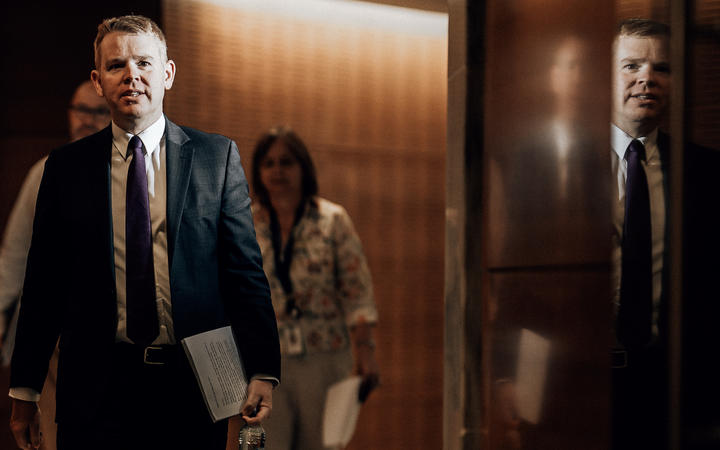
3 November: The country’s managed isolation hotels are nearly completely booked until Christmas, locking out some New Zealanders who had planned trips home to see loved ones. A second staff member at Christchurch’s Sudima managed isolation facility, a close co-worker of the case previously announced, tests positive. In a Cabinet shake-up, Chris Hipkins takes up the newly-created role of Minister for Covid-19 Response and will oversee managed isolation, border defences and the health response – including testing and contract tracing.
5 November: A Covid-19 wastewater testing pilot scheme is rolled out around the country to help detect the virus.
7 November: A worker at an Auckland quarantine facility tests positive. The Nurses Organisation says it is troubling the worker tested positive, the third such worker to be infected within a week, and that the government is failing to address serious systemic problems.
8 November: Another case of community transmission – a close contact of the Auckland quarantine worker. It is announced two Defence Force staff are at the centre of latest community outbreak, with one travelling from Auckland to Wellington after getting infected. The MOH says it sent push notifications to the smartphones of people who used the Covid Tracer to log in at “several locations of interest”.
12 November: An Auckland community case is announced – a woman who lives next to a managed isolation hotel. Workers in the city are asked to work from home, after it is revealed the woman worked in a retail store after being requested to stay home. The government has purchased several bulk freezers for storing a coronavirus vaccine.
13 November: The latest Auckland case is linked to the Defence Force cluster. Auckland office workers are allowed back into the city.
14 November: A neighbour of the Auckland woman who tested positive returns a weak positive result. The first cohort of international students prepare to return to New Zealand under a new border exception announced by the government in October.
16 November: About 140,000 teenagers begin NCEA and Scholarship exams 10 days later than originally planned, due to disruption caused by the pandemic. Schools lost five and a half weeks of classroom time during the national lockdown and Auckland schools lost a further two and a half weeks in the city’s lockdown in August. The government announces masks will be required for all passengers on public transport in Auckland and on all domestic flights.
19 November: The government announces new testing measures for border workers, including increasing the frequency for those at higher risk. An in-principle agreement is reached to purchase enough doses of Covid-19 vaccine for the entire population.
21 November: Five new cases in managed isolation and a border worker already in quarantine for the past two weeks tests positive.
23 November: Air New Zealand investigates after a staff member tested negative in New Zealand on 18 November but tested positive on arrival in Shanghai on 22 November.
26 November: Six members of the Pakistan cricket team touring squad in New Zealand test positive in managed isolation.
December
3 December: As job losses mount and Covid-19 support schemes wind down, budgeting services say there is no let up in the number of people seeking help.
8 December: A 90-year-old woman becomes the first person to be given a Covid jab as part of the mass vaccination programme being rolled out across the UK.
10 December: A Bluetooth upgrade to the Covid-19 Tracer app is launched. It will create an anonymised record created of every person the user has been near and if one of those people tests positive, the user will be sent an alert by the app.
12 December: An Air New Zealand crew member tests positive while in isolation, after arriving on a flight from USA.
14 December: Cabinet agrees in principle to establish a travel bubble with Australia early in 2021. Looking back at the year, Ardern said: “I’m incredibly proud of what our team of five million has achieved but I also want to acknowledge the huge sacrifices and hardship many have had to face to get us where we are.”
15 December: A new variant of coronavirus is found spreading quickly in parts of England. An intensive care unit nurse becomes the first person in the United States to receive the Pfizer/BioNTech Covid-19 vaccine, as the US death toll from the virus reaches 300,000. Finance Minister Grant Robertson announces businesses that suffer a 30% drop in revenue after alert level changes will be able to claim up to $21,500 through a new support scheme.
16 December: Four new cases in managed isolation bring the total to 1744. Treasury announces a faster and stronger economic rebound from the Covid-19 pandemic will see the government’s finances head back to surplus sooner than expected.
17 December: France’s President Emmanuel Macron tests positive for Covid-19.
18 December: The government announces it will pump another almost $3 billion into its Covid-19 response after a report identified failings with its testing strategy. About $1.1 billion will bolster testing and contact tracing and roughly $1.7 billion is for the managed isolation regime. The announcement comes after revelations many border staff were not being tested. The government sets up a Covid-19 Response Unit and a Border Executive Board. Ten new cases are reported in managed isolation, lifting the total confirmed cases to 1754.
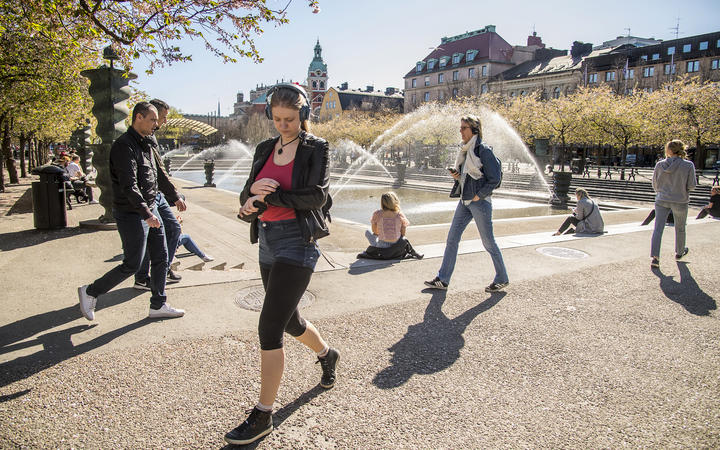
19 December: Moderna’s Covid vaccine is approved by the US government as the country’s second Covid vaccine. USA has the world’s highest number of Covid deaths, with 311,529 lives lost, and the most cases, with 17,269,542 infections. New Zealand now has agreements to secure enough Covid vaccines to vaccinate everyone in the country, as well as everyone in Samoa, Tonga, Tuvalu, Tokelau, Niue, and the Cook Islands, if the governments of those countries accept the offer.
20 December: Six new cases in managed isolation in New Zealand. British Prime Minister Boris Johnson imposes tighter coronavirus controls in England, seeking to curb the new more infectious strain of the virus. Scientists say the variant is up to 70% more transmissible. Britain has been one of the worst hit European countries – with more than 67,000 deaths and more than 2 million cases.
Between 21 and 27 December: 28 new cases in managed isolation. The more contagious variant found in the UK has spread to Denmark, the Netherlands and Australia.
28 December: In response to new variants, the government introduces a third Covid test for people travelling from high risk countries. People are now tested on day one, three and 12 of their stay in managed isolation.
30 December: The UK approves its second vaccine, from Oxford-AstraZeneca, after the Pfizer-BioNTech vaccine was given the go-ahead. More than 600,000 people in the UK have been vaccinated.
31 December: 11 new cases in managed isolation.
January 2021
3 January: 19 new cases in managed isolation over the past three days, including six cases of the new UK variant.
4 January: The government announces travellers from the UK and USA will need a negative test result before departing for New Zealand.
Between 5 and 11 January: 45 new cases in managed isolation. Almost a quarter of the country’s 77 live cases are now the UK variant.
12 January: The government says travellers from nearly all countries will have to provide a negative test before arriving in New Zealand.
15 January: 18 new cases in managed isolation in the past two days. Air New Zealand has lost almost half a billion dollars after a year with more than 4000 job losses, planes grounded, and routes dropped.
16 January: The worldwide coronavirus death toll passes 2m.
17 January: 10 new cases in managed isolation over the past two days. The total confirmed cases in New Zealand is now 1900.
18 January: Covid-19 Recovery Minister Chris Hipkins announces vaccinations should be available to the public by the middle of the year. The vaccine roll-out will be the largest ever mass immunisation campaign in New Zealand’s history. The ministry noted some elderly, frail people who had received the Pfizer/BioNTech vaccine in Norway died. Medsafe would thoroughly evaluate the vaccines to ensure they would be appropriate for use in New Zealand, the ministry said. Six new cases were reported in isolation facilities.
22 January: It becomes clear international fishing crew sharing rooms and walking through corridors to smoke outside led to two managed isolation staff contracting Covid-19. Voluntary Covid-19 saliva testing will be offered to border workers in quarantine facilities. Nine new cases are reported in managed isolation over the past two days.
23 January: Early evidence suggests the variant of coronavirus that has emerged in the UK may be more deadly, UK Prime Minister Boris Johnson says.
24 January: A woman is identified as the first community case since November. She travelled across Northland before her positive test result, but was scrupulous about using the Covid Tracer app. It seems likely she caught the highly contagious South African variant of the virus from a person on the same floor as her in managed isolation. The Australian government will suspend quarantine free travel for New Zealanders for at least 72 hours in the wake of the Northland community case. Northland people will queue for hours for Covid tests.
25 January: The government grants Covid-19 vaccine suppliers Pfizer and BioNTech indemnity from any claims that may arise from use of the vaccine. Masks are made mandatory on all Air New Zealand flights to and from New Zealand. More than 25m cases of coronavirus have now been confirmed across the USA.
26 January: Two new cases in managed isolation. Britain’s Covid-19 deaths pass 100,000, more than the country’s civilian toll in WWII.
27 January: Two people test positive after completing managed isolation in Auckland’s Pullman Hotel at the same time as a Northland woman, who later tested positive for Covid.
28 January: Hipkins announces no new returnees will be sent to the Pullman Hotel, its staff will not be allowed to move between facilities, and air-conditioning will be kept on to clean air in common spaces. People in managed isolation will have to stay in their rooms after their final day 12 test.
31 January: After four days with no new community cases, a travel bubble reopens, allowing travellers to enter Australia from New Zealand without going through quarantine. One new case is reported in managed isolation.
February 2021
3 February: The Pfizer-BioNTech vaccine is provisionally approved by Medsafe, with 58 conditions placed on the company. Three new cases in managed isolation
4 February: A new community case and six in managed isolation. The community case is the mother and wife of the two community cases who tested positive on 27 January.
6 February: Community events in Hamilton are cancelled after a former Pullman Hotel guest who had been isolating at home for a week tested positive. This is the fourth case of a person leaving the hotel and testing positive, with a fifth person also catching the virus from one of the Auckland returnees. Recent Pullman managed isolation guests had already been required to self-isolate for five days after leaving managed isolation. The hotel stopped taking isolation guests and was deep cleaned.
9 February: Employers can now get $350 to help pay workers waiting for Covid-19 test results, if staff cannot work from home. Minister for Social Development and Employment Carmel Sepuloni says the Short-Term Absence Payment will also cover the cost of sick leave for workers with no sick leave available. She hopes the payment will encourage people to get tested if they feel unwell. Two new cases in managed isolation.
10 February: New Zealand authorities formally approve the Pfizer Covid-19 vaccine for people aged 16 years and older once stocks arrive in the country. The World Health Organisation says work to identify the origins of the virus point to a “natural reservoir” in bats, but more work is needed to identify the source. International experts investigating the origins of Covid-19 have all but dismissed a theory that the virus came from a laboratory in China. The virus is “most likely” to have crossed over to humans from an intermediary species, says team leader Peter Ben Embarek. Three new cases in managed isolation in New Zealand.
13 February: Figures from ACC show there were 12 claims for compensation for Covid-19 last year. ACC payouts for the virus have so far totalled almost $100,000. Nine claims were from nurses who caught Covid at work, two from healthcare workers and one was classified as ‘other’.

14 February: Auckland goes into a level three lockdown, after three new community cases in a single South Auckland household. One of the cases is a student at Papatoetoe High School, which is closed in response. The rest of New Zealand moves to level two. There is also one new case in managed isolation.
15 February: Australia stops quarantine-free travel for New Zealanders, after the three community cases in Auckland. Five new cases in managed isolation.
17 February: Three new cases in the community – two are students at Papatoetoe High School and one works at a fast food outlet in South Auckland. Nevertheless, Ardern announces Auckland will drop to level two and the rest of New Zealand to level one at midnight. The new community cases are linked to the South Auckland family whose positive tests were reported on 14 February. There is also one new case in managed isolation.
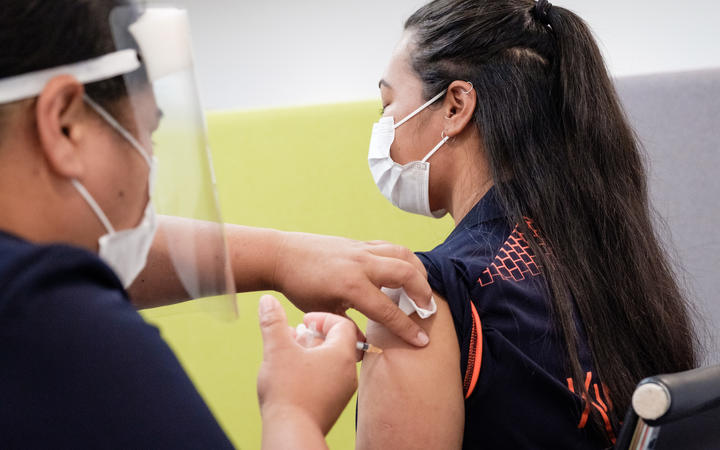
Auckland Jet Park Hotel quarantine facility worker Lorna Masoe receiving the Covid-19 vaccine on 20 February 2021. Photo: Supplied / Ministry of Health
20 February: Pfizer’s Covid-19 vaccine begins to be given to cleaners, nurses and security staff from Auckland’s Jet Park quarantine hotel. The plan is for 12,000 managed isolation, quarantine and border workers to be vaccinated in the next few weeks. The Ministry of Health says if there was a Covid-19 outbreak, the population at risk would be next in line to receive the vaccine after healthcare and border workers. The vaccine is expected to be available to the general public in the second half of this year. Two new cases in managed isolation.
21 February: The total number of tests processed in New Zealand laboratories is now 1,658,429. One new case in managed isolation. Quarantine free travel from New Zealand to Australia resumes.
22 February: Ardern announces Auckland will drop from Covid alert level two and join the rest of New Zealand at alert level one. There is one new community case and six others in managed isolation. The new community case is linked to the existing Auckland cases and the person has been in quarantine since 19 February. Cabinet decides to make face coverings mandatory on all public transport in New Zealand at levels one and two..The total number of confirmed cases is 2001 and there are 54 active cases.
23 February: One new community case – a student at Papatoetoe High School – is announced, and later in the evening it emerges the student’s two siblings also tested positive. There are now 11 cases in the Auckland cluster, all the UK variant. Bloomfield says several recent cases have had atypical symptoms, such as muscle aches and tiredness, something people need to keep in mind. The school remains closed until further notice. The first data on the UK Covid vaccine rollout suggests it is having a “spectacular” impact on stopping serious illness.The US has recorded more than 28m cases and the country’s death toll from Covid passes 500,000.
Health Protection Officer Debbie Smith was one of the first people in the South Island to receive a dose of the Covid-19 vaccine on 24 February, 2021. Photo: Supplied / Ministry of Health
24 February: About 40 border workers from Christchurch Airport are vaccinated as the Covid-19 immunisation programme starts rolling out in the South Island. Hundreds of Aucklanders queue for Covid tests after the latest cases in South Auckland. Air New Zealand cancels an Auckland to Brisbane flight while passengers are boarding, after Queensland changes its border rules. The profits of New Zealand’s banks have fallen by more than a quarter over the past year amid the Covid-19 pandemic. There are two new cases in managed isolation.
25 February: NSW, Victoria and Queensland limit quarantine-free travel after the cases linked to Auckland’s Papatoetoe High School. New Zealand businesses have already received more than $6,580,000 under the government’s latest Covid-19 business support scheme. The cash was paid out to 2535 firms in less than two days. The 8003 applications that were lodged requested $24m. Resurgence Support Payments aim to help businesses that suffer when there is an increase in alert levels. There are three new cases in managed isolation.
26 February: One new community case is reported – a KFC worker who was on a shift at the Botany Downs store earlier in the week. The new community case is linked to the Auckland February cases and has been in quarantine since 23 February. There were also two new border cases. The total number of active cases in New Zealand is 67 and the total number of confirmed cases is 2015. Air New Zealand suspends quarantine-free flying for people travelling from New Zealand to Australia until 28 February.
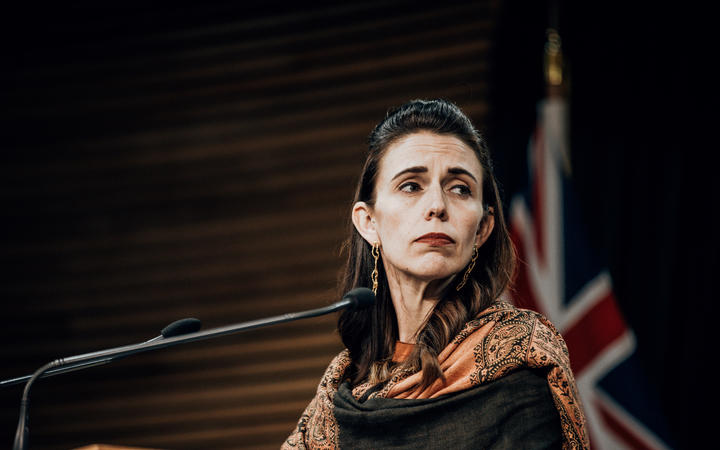
27 February: Ardern announces Auckland will move to alert level three for a week from 6am on 28 February after two new community cases. The rest of the country will move to alert level two. Ardern says one of the community cases was possibly unknowingly infectious for as long as a week without isolation and had visited high risk locations, including a supermarket, a gym, and the Manukau Institute of Technology. “We may well have close contacts who are already infected,” Ardern says. The latest cases could not be directly linked to earlier cases in the South Auckland cluster. One is a 21-year-old sibling of a Papatoetoe High School student and another the mother of the student, who had tested negative. Aucklanders are asked to wear masks when they leave their house. There is also one new case in managed isolation.
28 February: One year after the first case of Covid-19 is announced, Auckland goes into lockdown. One further community case is announced, but they were infectious while in quarantine so were not considered a risk to the public. They are a household contact of other cases reported on 23 February and 26 February.
Ardern says any potential spread from the two Covid-19 cases announced yesterday may take a while to show up.
Compiled by Susan Strongman, Michael Hall and Rose Davis
